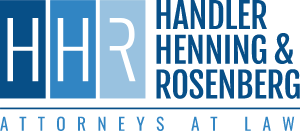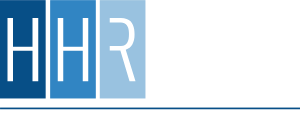For centuries, plaintiffs have relied on jury trials to affirm their rights. Even today, our court systems rely on trials to offer a forum where plaintiffs can take legal action against defendants to seek compensation. Unfortunately, despite how long trials have been around, not everyone fully understands trials, how they work, and the entire process from start to finish. You can better understand the process by knowing the purpose of trials, how they benefit injured individuals, and what to expect.
Immediately After an Accident
Even before a lawsuit becomes possible, numerous discussions will occur between the injury victim and the defendant/insurance company. This is often part of what everyone should know: reporting the accident. However, during the initial talks, it is common for the defendant to offer a settlement instead of filing a lawsuit. This is often a much lower offer than what the victim would receive if going through a trial. Victims have the right to refuse the settlement and pursue a lawsuit.
Filing a Complaint
Once you have decided to seek compensation and justice from the negligent party, you must file a claim. Your lawyer will help you serve the negligent party with a notification of the complaint. The complaint will include the claim, why you are entitled to compensation, and the type of relief you seek.
Typically, relief comes in three different principal forms:
- Injunction: An injunction can prevent the defendant from participating in the specific act.
- Declaratory Judgment: The court’s decision that determines each party’s rights. There is no order for anything to be done and no compensation.
- Monetary Relief: This is the most common form of relief in personal injury law because it seeks compensation for the defendant’s wrongdoing to cover specific damages.
The plaintiff can also decide the venue in which the complaint is filed, which determines the location where the case will be overseen.
Motions That Can Be Made Against the Complaint
After the complaint has been filed, the defendant can file various motions that delay the trial process. For instance, the defendant can file a motion to dismiss the complaint before they file a response.
The motion to dismiss may claim a defect in the service of process or other procedural issues with the initial complaint. The defendant can also file a motion to change the forum or venue. This has benefits, especially if the plaintiff faces financial hardships and the pressure to accept a settlement is time-sensitive.
Once the defendant files their motion, a pretrial conference will be held with a schedule for discovery. If the judge decides there is no need for a hearing and the issue can be resolved, they will work out possible solutions and move forward.
Discovery
The discovery process allows both sides to gather the necessary evidence in the case they intend to use for their respective clients. This can include talking to each party about the incident, speaking with any possible witnesses, gathering documents such as an accident report or medical records, and collecting all necessary evidence.
Once everything has been collected, the parties can move to trial, or a settlement may be possible, depending on the factors involved. Typically, the discovery process provides both sides with the strengths in their cases and allows each side to understand better what happened.
Understanding the Importance of Evidence
Evidence plays a critical role in the courtroom. It serves as the backbone of your case, providing the tangible proof necessary to substantiate your claims. In personal injury trials, evidence can come in various forms, such as medical records, accident reports, photos or videos of the accident scene, eyewitness testimonies, and more.
Medical records, for instance, not only establish the nature and extent of your injuries but can also help in proving the causation—that your injuries were a direct result of the accident. Photos or videos from the accident scene can provide a visual testament to the incident’s circumstances. On the other hand, eyewitness testimonies offer a third-party perspective that can support your account of events.
However, gathering and presenting evidence in a way that effectively supports your case is not always straightforward. It requires careful attention to detail and an understanding of the rules governing the admissibility of evidence. Therefore, having a seasoned personal injury attorney by your side can be immensely beneficial in managing this aspect of your case.
Expert Witnesses & Their Role
Evidence only helps your case if the jury can understand its significance. Some pieces of evidence are easy to grasp, but others require lengthy explanations to comprehend fully. That’s what expert witnesses are for.
Expert witnesses are an integral part of many personal injury trials. They are individuals with specialized knowledge, skill, experience, or training in a particular field relevant to your case. Their primary role is to provide an objective opinion grounded in their expertise and to help the judge or jury understand complex issues beyond a layperson’s knowledge.
In personal injury cases, types of expert witnesses can include medical professionals, accident reconstructionists, life care planners, and economists, among others. For instance, a medical expert can testify on the nature of your injuries, the necessary treatment, and the potential impact on your future quality of life. On the other hand, an accident reconstructionist can help establish how the accident happened, often using scientific methods to recreate the incident.
The testimony of expert witnesses can lend significant credibility to your case, particularly when the opposing side disputes the facts. It’s important to note that expert witnesses must base their opinions on accepted theories and methodologies within their field. Selecting the right expert witness and effectively presenting their testimony is a task best handled by an experienced personal injury attorney who understands the intricacies of this process.
How a Case Can End Before Trial
One potential way that a case can end before trial is if the judge decides to dismiss it after the motion to dismiss from the defendant. Dismissal happens for various reasons, but most commonly, motions to dismiss would be granted if there is insufficient evidence to continue with the lawsuit or if the judge determines there are holes in the plaintiff’s complaint.
Another potential way to end a case before trial is through a settlement. Typically, settlements are offers from the defendant that would provide the plaintiff with some monetary relief, but it may not be as much as they can receive through a verdict. Defendants often delay trials in hopes of the plaintiff needing the money as soon as possible and agreeing to the settlement just to be done with the process.
In some cases, however, the settlement offer may be adequate after the discovery process. For instance, if discovery uncovers some evidence that the defendant was initially unaware of, they may agree to settle for the amount the plaintiff is requesting because they know they would lose at trial.
Settlements are often the avenue the defendants want to go because it allows them to avoid extensive court fees and keeps their negligence from the public eye. It keeps the size of the compensation from being determined by a jury.
The Trial
The trial will begin, and each party will formally make its claims to the court. The court considers the evidence and requested compensation before making a decision. Knowing that the court can award economic and non-economic damages depending on the injury, severity, and the defendant’s actions is essential.
Economic damages cover those with a monetary value, such as medical bills and lost income. In contrast, non-economic damages compensate for pain and suffering—damages sustained that may not have a concrete cost attached to them.
Appeals
Because defendants are always looking out for their bottom line, they often try to delay the plaintiff receiving compensation for as long as possible. This can also be achieved through appeals following the decision of the court.
For instance, if the court awards the plaintiff compensation for economic and non-economic damages, the defendant can file an appeal to alter the amount awarded or to seek a dismissal of the judgment.
What happens after an appeal depends on the ruling. It is essential to know that this is an extensive and time-consuming process, and it may be some time before the victim can recover damages for their injuries. Defendants (often insurers) use this tactic to pressure plaintiffs into settling for a smaller payout.
Hiring a Lawyer Can Protect Your Rights Throughout the Process
Many view trials as a money game designed to recover compensation, but it is more than that. It allows victims of negligence to recover and have peace of mind. It also forces the liable parties to accept responsibility. It inspires change. It inspires those in the wrong to correct their actions and answer for them.
At Handler, Henning & Rosenberg LLC, our Pennsylvania personal injury lawyers understand how to guide our clients through a trial, making it as easy as we can on them. After sustaining an injury and enduring one of the most challenging seasons in your life, we do not want you to feel as though you are struggling at every turn.
Our team works around the clock because you need compensation and justice. You deserve to hold the negligent party accountable for their actions. You need someone on your side who cares about you, your needs, and your peace of mind.


